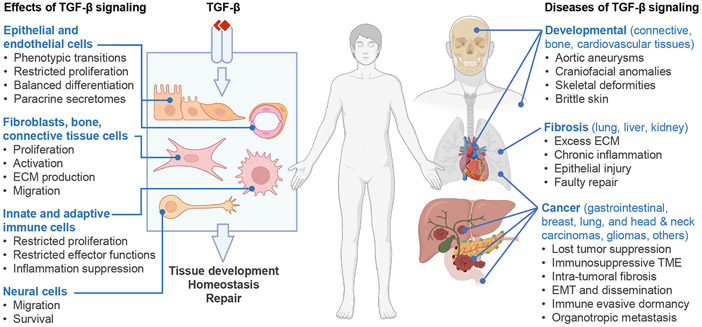Figure 1. TGF-β in health and disease.
TGF-β guards tissue homeostasis through multiple effects on different cell types. Although TGF-β signals through a common receptor and a set of transcription factors in all cells, it triggers different effects on diverse cellular functions depending on the cell type and tissue environment. Epithelial cells, fibroblasts, immune, vascular, connective, and neural cells are important TGF-β targets, and their coordinated responses determine the overall effect of TGF-β on a tissue. The whole tissue, more than any of the constituent cell types, is the target of TGF-β, and preserving tissue integrity is the ultimate output. TGF-β response programs drive embryo development and promote tissue homeostasis and injury repair in the adult. Congenital defects in TGF-β signaling cause rare yet serious developmental syndromes, and somatic alterations of this pathway underly common forms of fibrosis and cancer.

